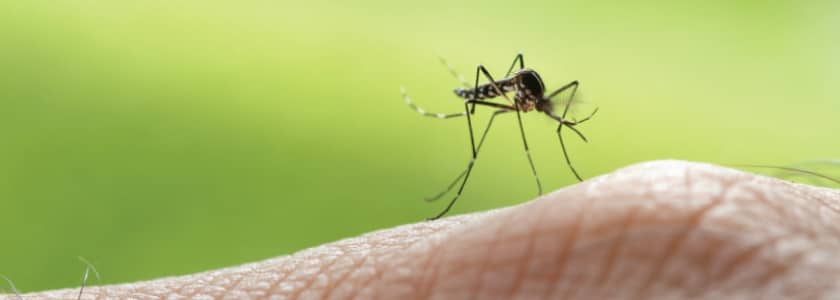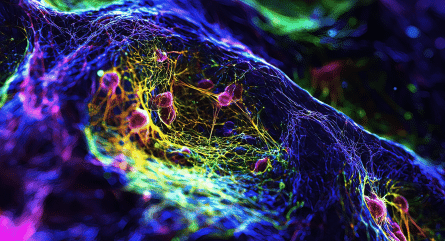This is probably the last thing you need to hear right now, but it looks like Japanese encephalitis is making a comeback.
Detected in parts of Australia early in 2022, the appearance of this mosquito-caused illness was likely fueled by an extended spell of wet weather in key parts of that country.
What is Japanese encephalitis?
Japanese encephalitis is a viral brain infection spread through mosquito bites. The virus is most commonly found in southeast Asia and nearby tropical areas. It was first described in Japan in 1871, though the disease is now rare there thanks to broad immunization efforts.
Japanese encephalitis: Facts and figures
Japanese encephalitis (JE) is closely related to the West Nile virus. You get it through the bite of an infected Culex species mosquito. Usual onset is five to 15 days after infection, with diagnosis through blood or cerebrospinal fluid testing.
Symptoms and prevention of Japanese encephalitis
In humans, the onset of the disease may be marked by severe rigors, followed by fever, headache, and general malaise, lasting from one to six days. Acute cases will include fever up to 105 degrees F (41 C), convulsions, neck rigidity, and paralysis and muscle loss.
Antibodies are detectable from three to eight days after the onset of illness and can persist for 90 days or even longer. Prevention is primarily through one of three JE vaccines, though previous infection gives you life-long immunity.
Treatment of Japanese encephalitis
There is currently no specific treatment for Japanese encephalitis, and as there is no person-to-person transmission, isolation is not required of patients.
Annual frequency is currently around 68,000 cases, with an average of 17,000 deaths reported. Most people infected with the virus have either no symptoms or very mild symptoms that are mistaken for the flu. About one in every 250 people who get the virus develop more severe symptoms that can spread to the brain.
Is there Japanese encephalitis in Australia?
Japanese encephalitis tends to occur in outbreaks, and there is currently one such cluster underway in Australia. As of the end of the end of April, there were 37 confirmed and suspected cases of the virus in humans in four states in the country, with the first case reported in late December 2021. Cases were found in the steamy state of Queensland but also further south into more arid states including Victoria, South Australia, and New South Wales, where there were 11 confirmed and two suspected cases. In total in the country, there have been four reported fatalities.
On March 4, 2022, Australia’s Acting Chief Medical Officer, Dr. Sonya Bennet, declared a “Communicable Disease Incident of National Significance,” but in this case the declaration goes beyond the human impact to include the reduction of Japanese encephalitis in pigs.
The virus’ natural cycle includes not just the Culex mosquitoes but also waterbirds. On rare occasions, it can spread to humans, horses, and pigs. Extensive flooding during the height of Australia’s summer in late 2021 and early 2022 was focused along the country’s eastern shore, which is also where many of the country’s pig farms are located. Currently, some 2.4 million pigs are kept in Australia at 4,300 sites. While the virus is not transmitted through pork meat, it does cause still births, which is an economic impact to farmers. In fact, according to one industry publication, production losses in New South Wales are already up to 80 percent, and this is likely to affect the availability of pork in coming months.
Can CRISPR offer a solution for Japanese encephalitis?
CRISPR is improving what researchers understand about the virus and how it can be confronted, though it is not yet offering a concrete solution.
In a Nature Communications study from late 2020, Chinese researchers described how using a genome-wide gRNA library in porcine cells identified host factors associated with Japanese encephalitic virus replication.
Those researchers wrote that CRISPR-Cas9 can be used as an effective screen for functional analyses in pigs, and they presented a proposed model for Japanese encephalitis virus entry and replication in porcine cells. A large number of candidate host factors were identified with the screen, they noted.
A 2021 study in Cell Host & Microbe by a team of Americans built on prior work and highlighted the ability of CRISPR-Cas systems to address critical needs in response to infectious disease–including Japanese encephalitis. This study noted work with Cas12-based and Cas13-based diagnostics to sensitively detect a wide range of viral targets using singleplex assays.
“The ongoing discovery and characterization of CRISPR-Cas systems is continuing to expand our toolkit for the study and benefit of mammalian systems, including our efforts to combat viral infectious disease,” they wrote. “Substantial efforts have been made to expand the utility of CRISPR-based diagnostics with the ultimate goal of testing at the point of care, anywhere in the world, or for comprehensive surveillance.”
And CRISPR was further used in 2020 in a study published in BMC Genomics that used genome-wide profiling during Japanese encephalitis virus-induced neuroinflammatory responses.
“The CRISPR-Cas9-mediated knocking down of a selected circRNA, the circ_0000220, in cultured mouse microglial cells validated its function in regulating the production of inflammatory cytokines during JEV infection, suggesting a potential therapeutic target to ameliorate the signs of JEV-induced encephalitis,” researchers wrote. “The targeting of circ_0000220 offers a therapeutic effect against Japanese encephalitis in vivo remains to be elucidated in future studies.”
CRISPR is also being used to study the Culex mosquito in particular and how it could be used to stop the species from spreading diseases. In perhaps the most intriguing of all the recent CRISPR studies relating to Japanese encephalitis, a team from the University of California at San Diego developed several genetic editing tools for an eventual gene drive that would prevent Culex from spreading disease, this drive would disable the bugs’ ability to transmit pathogens through the targeted wild population. These CRISPR-Cas9/guide RNA tools could also be applied to other critters like the fruit fly.
What is the future of Japanese encephalitis and vaccinations?
Predicting where this virus will go is difficult, as it is for almost all viruses. In the context of Australia, cases appear to be on the decline as the continent heads into winter, which typically ushers in a period of drier and cooler weather.
The main question at hand now is if the virus will become endemic in local mosquito populations–which means it could become a long-term threat to shorebird, horse, and pig populations. If so, that could mean more frequent infections in people and demand a widespread vaccination program. Vaccines could help, but they won’t eradicate the virus since the country also has a fairly health population of feral pigs that would be hard to vaccinate.
Mosquito surveillance could play a major role in monitoring the virus and curbing transmission, and here, too, next generation sequencing (NGS) can play a role. In one 2020 study by a team of researchers from Taiwan and the United States, NGS was applied to evolutionary dynamics that show how dengue changes and evolves at the molecular level. And in a 2019 study, targeted NGS was used to characterize the genetic differences associated with insecticide resistance in Culex misquotes in the southern U.S.
Culex annulirostris needs temperatures above 17 degrees C (63 F) to survive, so as the days shorten in Australia it will have less impact. Will Japanese encephalitis reappear next summer? We will have to wait and see. For research use only. Not for use in diagnostic procedures. Unless otherwise agreed to in writing, IDT does not intend these products to be used in clinical applications and does not warrant their fitness or suitability for any clinical diagnostic use. Purchaser is solely responsible for all decisions regarding the use of these products and any associated regulatory or legal obligations.



























